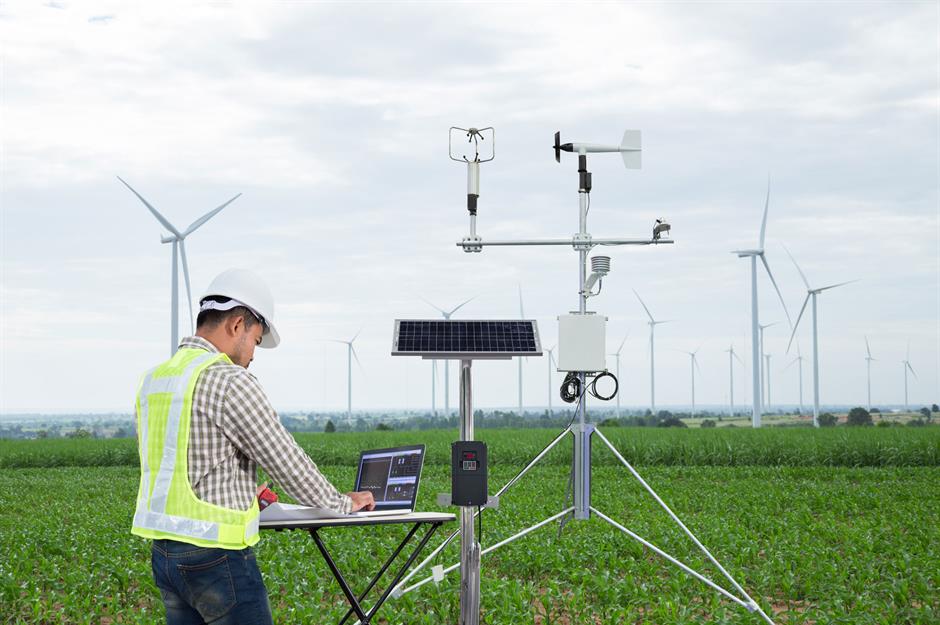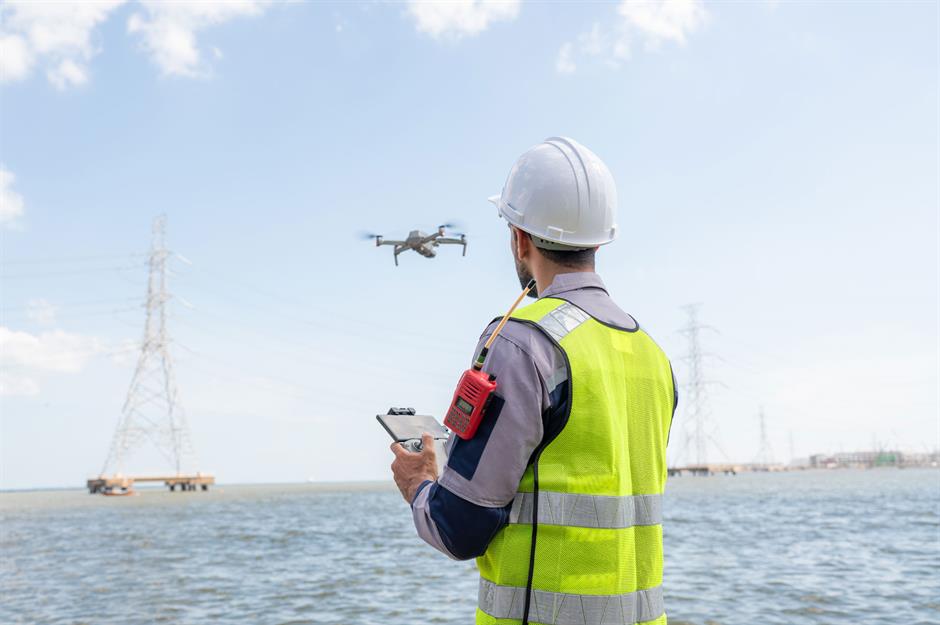20 jobs that didn't exist 20 years ago
New roles barely imaginable two decades ago

Cast your mind back to 2005. Flip phones were all the rage, skinny jeans were just starting to trend, and your iPod was no doubt cranking out your fave Y2K tracks. Back then, jobs like crypto trader, AI ethics officer and space tourism guide were futuristic fantasies. And while everyone was loving MySpace, making a living as an influencer wasn't even close to being a thing.
Yet these are just a few of the many roles that have emerged since the mid-noughties. With everything from technological advances to climate change driving their creation, read on for 20 jobs that didn't exist two decades ago. All dollar amounts in US dollars.
Crypto trader

The idea of a decentralised currency using encryption came about in the 1980s with the invention of eCash, a digital money concept. But the term 'cryptocurrency' wasn’t coined until 1998 – and it wasn’t until 2009 that Bitcoin, the first true cryptocurrency, was launched by the mysterious Satoshi Nakamoto.
Crypto has of course exploded since then, giving rise to a range of new jobs. Among them is crypto trader. Whether working independently or as part of a hedge fund or exchange, this fintech (financial technology) professional buys, sells, and speculates on the volatile world of digital currencies: a world that was completely uncharted territory in 2005.
Blockchain developer

Cryptocurrency wouldn't exist without the blockchain, the digital ledger that enables secure peer-to-peer transactions. Blockchain developers create and maintain the infrastructure behind these systems.
Incidentally, Bitcoin was reportedly invented as a response to the failure of traditional banking systems during the 2008 Global Financial Crisis, which sparked demand for a decentralised financial solution.
NFT strategist

The blockchain also set the stage for non-fungible tokens (NFTs), unique digital assets that often take the form of avatars, art, music, or collectibles. Quantum, the first ever NFT, was created in 2014. By 2017, the tokens were enjoying mainstream appeal.
A host of new jobs have been created in this booming digital space, including the role of NFT strategist. Typically paying up to $150,000 (£112k) a year, the position is all about planning and deploying strategies for these virtual assets, covering their creation, promotion, and sale.
Social media manager

Though Facebook launched the previous year, MySpace was the dominant social networking site in 2005, and businesses were yet to embrace social media as a powerful marketing tool. When companies did eventually catch on, they initially put their existing PR and marketing staff on the case, before hiring dedicated social media managers to create and manage their content.
To give you an idea of how much the job has grown in terms of headcount, there were just 4,636 social media managers in the US in 2010. Their numbers have since mushroomed to well over 60,000, according to Revelio Labs.
YouTuber

The terms 'vlog' and 'vlogger' were invented around 2002 but YouTube wasn't launched until 2005. 'YouTuber' entered the English language the following year, but simply referred to a user posting content on the site. That all changed in 2007 when the video sharing platform started monetising content, turning YouTuber into a legitimate career option.
Fast-forward to 2025, and YouTubers aren't just content creators. They’re tastemakers, entrepreneurs, and even world-famous celebrities, with the biggest stars like MrBeast and Jake Paul pulling in 10s of millions of dollars a year. And even creators with much smaller followings can make decent money from the platform, something that would have seemed outlandish 20 years ago.
Influencer

The concept of a social media 'influencer' would have also seemed far-fetched in 2005, despite the existence of platforms including MySpace and the fledgling Facebook. While influencer marketing in a broader sense had been a strategy since the 1990s, the idea of an individual making a living solely from their social media following was entirely new.
In fact, social media 'influencer' only started gaining traction as a serious career path in the early 2010s, truly blossoming around 2015. It finally entered the Merriam-Webster dictionary in 2019.
App developer

Two decades ago, mobile phones were mostly for calling and texting. Then came the launch of the Apple iPhone in 2007, followed by the App Store in 2008, which completely changed the game.
The iPhone's trailblazing touchscreen and the App Store’s ecosystem ushered in a whole new industry, creating massive demand for a wide range of apps, and Apple's offering was swiftly followed by an Android version. This rapidly created the role of app developer. Globally, these professionals now number in the 10s of millions.
Ride-sharing driver

If you needed a ride back in 2005, your options were limited to a taxi or a lift from a willing friend or family member. The idea of summoning a private car with your phone from pretty much anywhere via something called an app would have seemed groundbreaking. The debut of the Apple App Store paved the way, and Uber was launched in 2009.
Nowadays, ride-sharing drivers operating through app-based platforms are a ubiquitous part of urban life. Uber alone counts 7.8 million drivers, who ferry around a staggering 170 million passengers each month.
Food delivery app rider

In 2005, ordering takeaway was a bit of a mission. Think flicking through the stack of greasy menus that had been shoved through your door, having to call the restaurant, scrambling for the cash to pay the delivery person, and so on. Online delivery did exist, but it was a clunky, limited affair, mostly via desktop websites, and an on-demand rider network was non-existent.
Again, the launch of the iPhone in 2007 (and subsequent mobile app revolution) changed everything. Food delivery apps have since conquered the world and spawned a new profession, that of the gig economy food delivery rider. These are independent contractors in the mould of the ride-sharing driver, typically operating through a platform such as DoorDash, Uber Eats, or Deliveroo.
AI trainer

AI is stealing jobs from humans left, right, and centre, but it's creating plenty, too. Cue the AI trainer. In 2005, the idea of teaching an algorithm to 'think' like a human or interpret complex data seemed the stuff of science fiction.
Today, AI trainers do just that and more, shaping the way chatbots, generative tools, and other AI models behave, constantly monitoring their output to ensure their responses are fair and accurate. One of the newest job types in our round-up, AI trainer emerged in the 2010s as a very niche role before going mainstream in 2022 following the release of ChatGPT and other large language models (LLMs).
Chief AI ethics officer

AI is a moral minefield, throwing up all sorts of ethical dilemmas from worries over inbuilt bias to privacy concerns. These pressing challenges have driven the need for ethical oversight of the technology.
These professionals oversee the development and implementation of policies that ensure AI is built responsibly and adheres to ethical guidelines. Pioneering barrister and professor Kay Firth-Butterfield originated the role in 2014, and by 2020, more than half the organisations delivering AI had a leader in charge of ethics, according to research from IT giant Capgemini.
Esports coach

Esports skyrocketed in popularity during the 2010s. With the stakes a lot higher and competition much fiercer, esports teams hired dedicated tutors en masse, taking their cues from traditional sports. Before 2010, formal esports coaches were practically unheard of.
These days, esports coach is a viable career path that can offer an annual salary of up to $100,000 (£75k), or even more for the most prestigious professionals.
Space tourism guide

Space tourism kicked off in 2001 when US entrepreneur Dennis Tito became the first paying civilian to enter space. Even so, the idea that you could make a career as a space tourism guide would have seemed absurd in 2005. Twenty years later, it's a burgeoning reality.
With the likes of SpaceX, Blue Origin, and Virgin Galactic already sending tourists to space, highly trained guides are now required to prep passengers, assist them during the flight, provide expert commentary, and take care of the post-flight briefing.
Head of remote

In 2005, the idea of someone managing teams working from home would have been bizarre. While WFH existed, it was super-niche and usually an ad-hoc arrangement when someone was feeling under the weather. Then the COVID-19 pandemic happened and remote working became the norm for many organisations.
This seismic shift has led to the emergence of a number of new roles, including head of remote, aka director of remote working. This leadership position entails overseeing all facets of teleworking, from hiring and onboarding employees to nurturing a healthy and productive WFH culture.
Climate change analyst

Climate change analysts barely existed in 2015, let alone two decades ago. With the effects of global heating becoming ever more apparent and the global push towards net zero accelerating, businesses and other organisations are now hiring specialist climate change analysts in their droves.
These experts assess the risks and develop strategies to minimise any impacts. They also help their employers reduce carbon emissions and enhance sustainability.
Circular economy manager

With sustainability at the top of the agenda, many organisations are going that bit further and employing a circular economy manager.
Not just a fancy new name for a waste manager, this recently created role focuses on redesigning systems to eliminate waste, keep materials in use longer, and build truly sustainable business models.
Autonomous driving engineer

In 2005, driverless cars were essentially still confined to movies like Minority Report and I: Robot. Two decades later, they're on our roads and set to be commonplace. Autonomous driving engineers are at the forefront of making this happen.
These highly specialised professionals design, test, and refine the complex systems that allow driverless vehicles to perceive their environment, make judicious decisions, and navigate safely with zero human intervention.
Cloud solutions architect

Twenty years ago, the prospect of running a business fully in the cloud was still a pipe dream. Most companies relied on their own physical servers. But as major platforms like Amazon Web Services (AWS) launched from 2006 onwards, a new era of computing began.
This spurred the creation of the cloud solutions architect role. These top IT executives design, implement, and maintain an organisation's cloud infrastructure, balancing performance, cost, and security to ensure systems run smoothly and efficiently in the cloud.
Drone operator

Drones were limited to military use in 2005, but change was right around the corner. The following year, the US Federal Aviation Authority (FAA) issued the first commercial drone permits and a whole new industry took off, literally.
Today, commercial drones are used for aerial photography, delivering packages, assessing dangerous sites, and a whole lot more besides. And for every drone in the sky, you need a skilled operator on the ground.
Online fitness trainer

In 2005, most people looking for home fitness were snapping up DVDs from celebrity trainers like Jillian Michaels or programs like P90X. A turning point came with the launch of YouTube that year, heralding the arrival of the online fitness trainer.
Instagram soon followed, turning trainers into influencers, while apps like MyFitnessPal and Sweat helped them scale their services. Peloton’s 2013 debut brought slick, connected workouts into the mainstream. But it was the COVID-19 pandemic that really pushed the profession into overdrive, as trainers pivoted to livestreams, Zoom sessions, and on-demand coaching.
Now discover the luxury collectibles the super-rich are snapping up
Comments
Be the first to comment
Do you want to comment on this article? You need to be signed in for this feature